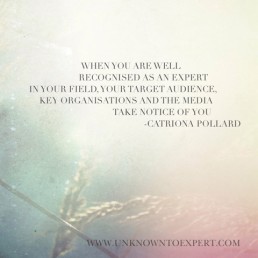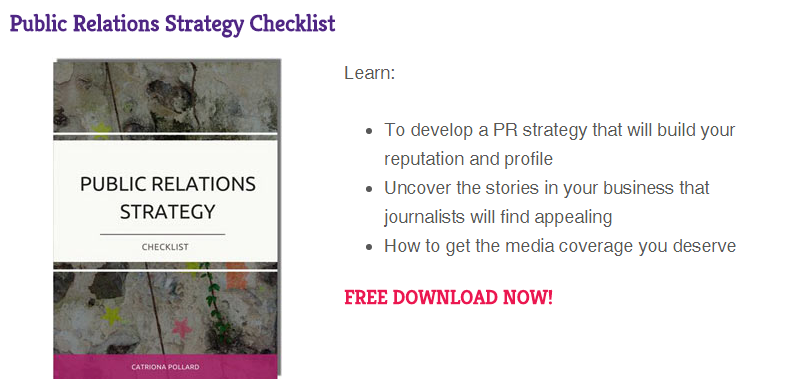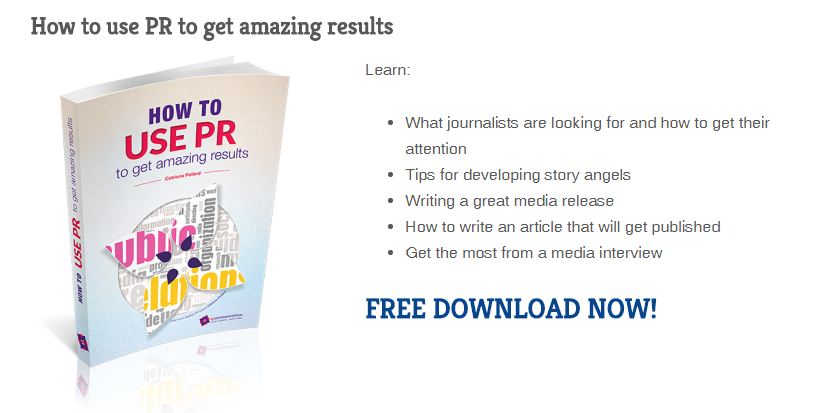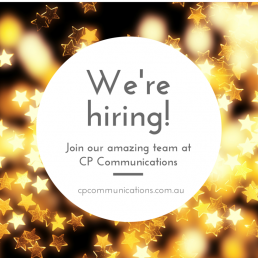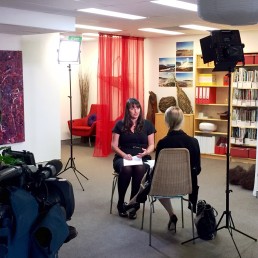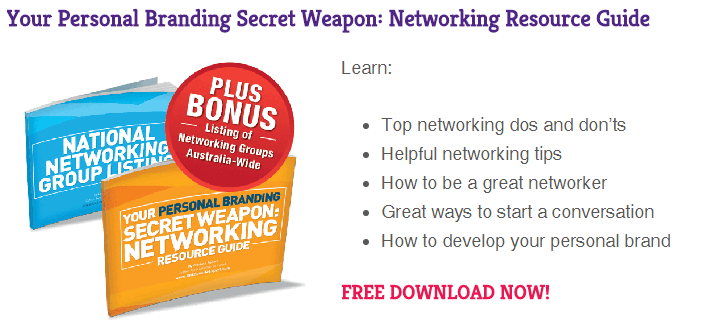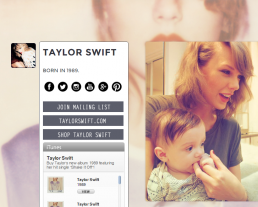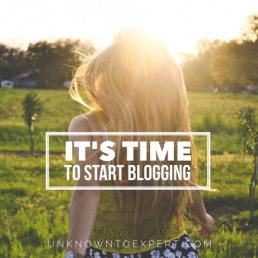How to become an influencer in your industry
Being an industry influencer can offer rewarding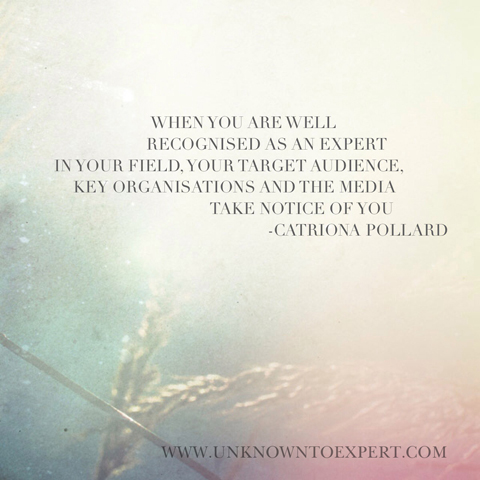 qualities, both personally and professionally; whether it’s for promotional purposes, growing your business or establishing a reputable brand as an expert in your industry.
qualities, both personally and professionally; whether it’s for promotional purposes, growing your business or establishing a reputable brand as an expert in your industry.
An influencer is someone who is regarded as an expert; someone who others in their industry look to for advice, knowledge and opinions. Becoming a successful influencer takes time and a strong dedication to serving others.
But the rewards are well worth the effort. You’ll find doors open to new opportunities as well as a deeper sense of connection with your peers.
Here are some tips for growing your influence in your industry.
1. Know your motivations and intentions
Ask yourself why you want to be considered an influencer in your industry. If your motivation is purely to get sales, then your audience will quickly see through this. Sales and business growth can of course be a driver, but there needs to be a deeper purpose behind this.
It could be a desire to connect with your peers more meaningfully; or simply a desire to share your knowledge so others can benefit from your insights.
2. Build relationships and encourage others
The idea of putting yourself forward can be incredibly uncomfortable and confronting. Letting self-doubt creep in – do I know enough? Am I really an expert? – can hold us back. But we need to shake off those self-limiting beliefs.
We all have stories, experiences and knowledge that are unique and can help others in some way. By sharing your knowledge and experiences, you will be able to connect and inspire others. You can even positively influence their future decisions.
3. Build a reputation as an expert in your field
Sharing useful and interesting information can be a powerful tool in building a positive reputation and solid credibility. But don’t try and be the expert on everything in your industry. Find a targeted, focused niche in which to specialise.
People need to know your name and your face – and associate it with that niche. Use your own experiences in your industry and do some thinking about who you are, what you stand for and the value you offer.
4. Your audience comes first
Being an influencer in your industry isn’t about you – it’s actually about the people you want to influence. Put them first.
Share something that is of value to them, whether this is your IP, time or expertise. For instance, if you are a management consultant, you could share your tips on how to reduce the increasing amount of time people have to spend on emails through the clever use of Rules or Filters. Or if you’ve attended a large industry event overseas, share your observations and learnings from your trip.
Today, it takes more than being good at what you do to stand out from the crowd. People want to know what you have to offer, but they don’t necessarily want you to sell to them.
It has now become all about your personal brand, what you stand for and how you are perceived. Becoming an industry influencer is an effective way of raising your profile in a way that enhances your reputation and credibility.
Want more PR and social media tips? Download our FREE ebook.
Sydney Public Relations Agency, CP Communications provides specialist media, traditional and online PR strategies that get amazing results. Contact us today. For more great tips visit our website www.PublicRelationsSydney.com.au.
3 tips to make your PR more creative

Have you run out of ideas for your public relations strategy or you find yourself writing the same thing over and over again?
Are you finding it difficult to generate ideas that can help you find new angles for media pitches or great topics for articles?
Running out of ideas and finding it a challenge to come up with new topics are sure-fire signs that you need to review your PR routine.
Finding new ways and approaches to get your creative juices flowing can help you gain visibility, readership and response for you and your brand; as Albert Einstein once said, “Imagination embraces the entire world, and all there ever will be to know and understand.”
Brainstorming new concepts for your PR strategy can help you stand out and let your voice be heard in the competitive environment.
Here are three tips to make your PR more creative and imaginative:
1. Be visual and ignite your creativity
Research shows that just imagining something can have the same effect as actually doing it. Be proactive and brainstorm ideas on a regular basis. This can help you generate ideas for media angles and articles for your business.
2. There’s more than meets the eye
Think beyond what you perceive. Is that stick a stick? No, it’s a magical wand that turns rooms into butterflies. Pretend a rock is a car or that plane in the sky is a magic carpet on its way to you. Just like in PR, pretend you are the journalist – what kind of articles and topics will stand out to them than others? Start pretending more, and see what happens to your creativity and imagination.
3. Embrace the silence
Silence can create a space for truly creative thinking. Try sitting somewhere quiet for an hour or so, just in your thoughts. Allow whatever comes to mind, and then jot this down, or draw it.
Start imagining and let your creative side ignite. Being more creative and thinking outside the box can help you and your business stand out against your competitors.
Want more PR Tips? Download this free PR Strategy Checklist:
Sydney Public Relations Agency, CP Communications provides specialist media, traditional and online PR strategies that get amazing results. Contact us today. For more PR tips see www.PublicRelationsSydney.com.au
Why you need to tell your entrepreneur story
The media landscape has changed for  entrepreneurs. Public relations once meant mastering the art of pitching a story to the media. However, in today's business and media climate, long-form narrative and conventional journalism now share the stage with social media posts of 140 characters or fewer, and images that disappear seconds after they are opened.
entrepreneurs. Public relations once meant mastering the art of pitching a story to the media. However, in today's business and media climate, long-form narrative and conventional journalism now share the stage with social media posts of 140 characters or fewer, and images that disappear seconds after they are opened.
To be successful in the media, you need to own your narrative, share it widely, and become a master storyteller.
Story telling for entrepreneurs
The more your stories resonate with people, the more likely they are to be remembered and shared.
While you may be thinking that you have no stories to tell – that your life and busness isn't interesting – you are wrong.
In fact, your own personal story is one of your entrepreneurial strengths. The most powerful entrepreneur stories are about passion and transformation – which is something that everyone can relate to.
Your entrepreneurial story
Everyone, journalists included, loves to hear about the entrepreneur’s story.
These closely resemble the classic ‘Hero’s Journey’, which are featured in so many movies. First, you are called to adventure. Then you meet challenges and obstacles along the way. Then, through adversity, there is the achievement, where you find success, and what you were looking for.
And finally, you “return.” That may not mean going back to your hometown: instead, it means building your success, sharing your insights with others, or starting another adventure.
Find out more story angles for your business.
Start telling your story
This storytelling model is a key element of entrepreneurial success. It can be applied in any context to give a robust narrative to your leadership, and provide a lens through which to attract interest and build your reputation.
In the first section of my book From Unknown To Expert, I share with you one of my stories and it is a powerful way to set the scene of the book. It has been used countless times. In fact, it’s the basis of my whole TEDx Talk.
Take the time to uncover your entrepreneur story. You’ll find it a powerful way to share your messages with the people that matter to you.
Want more PR tips? Download this FREE ebook:
Sydney Public Relations Agency, CP Communications provides specialist media, traditional and online PR strategies that get amazing results. Contact us today. For more PR tips see www.PublicRelationsSydney.com.au
PR Consultant position available
 • Fantastic PR position - so much potential
• Fantastic PR position - so much potential
• Great team environment
• Working directly with a leading PR expert
• PR and social media
If you love public relations & social media, we have the position for you!
We are widely recognised as a leading PR specialist Agency in Australia and our CEO is an internationally recognised leader in PR. Our culture strives to constantly train, develop and promote the skills and abilities of our people.
A public relations specialist role exists within our process rich organisation, allowing you to concentrate on the creative and strategic side of your role. On a daily basis you will be proactively pitching angles to media based on the news agenda as well as thought leadership themes.
You will be providing social media strategy and implementation. You will also be responsible for regularly writing articles, blog posts and other content and will need exceptional written communications in order to successfully fulfil this position.
You will have excellent client management skills, be highly organised and thrive in a fast-paced environment and can tackle the challenges and opportunities as they arise.
You will have a proven track record in PR/social media as you will be managing a client portfolio and must have an intuitive approach to account management and service delivery.
A PR, Communications or Journalism background would be well suited to this position. Essentially though, you must have a genuine interest in media, social media, news and an ability to understand and articulate emerging trends.
Collaboration and accountability will be a cornerstone of your success, work-life balance and flexibility is available to those with a mature and professional character.
We offer an environment that is supportive of growth, friendly and rewarding. You will be given plenty of opportunities to learn from a highly experienced team, including one of Australia’s best PR minds, Catriona Pollard.
This role is perfect for you if you are pro-active, driven by results and possess excellent media relations skills and contacts, strong writing ability and attention to detail.
You will be joining a team that loves to multi-task while meeting tight deadlines and consistently delivers exceptional client service. We are known for being results driven, and our clients love us for it.
Applicants must be an Australian resident or hold an Australian visa.
If this sounds like you, we'd love to hear from you. Please email your cover letter, resume and salary expectation to info@cpcommunications.com.au.
Read more about our culture! Check out our Facebook page to meet the team and see our offices and the things we do at https://www.facebook.com/cpcommunications
4 essential tips to conquer a TV interview
A television interview can help give you and your 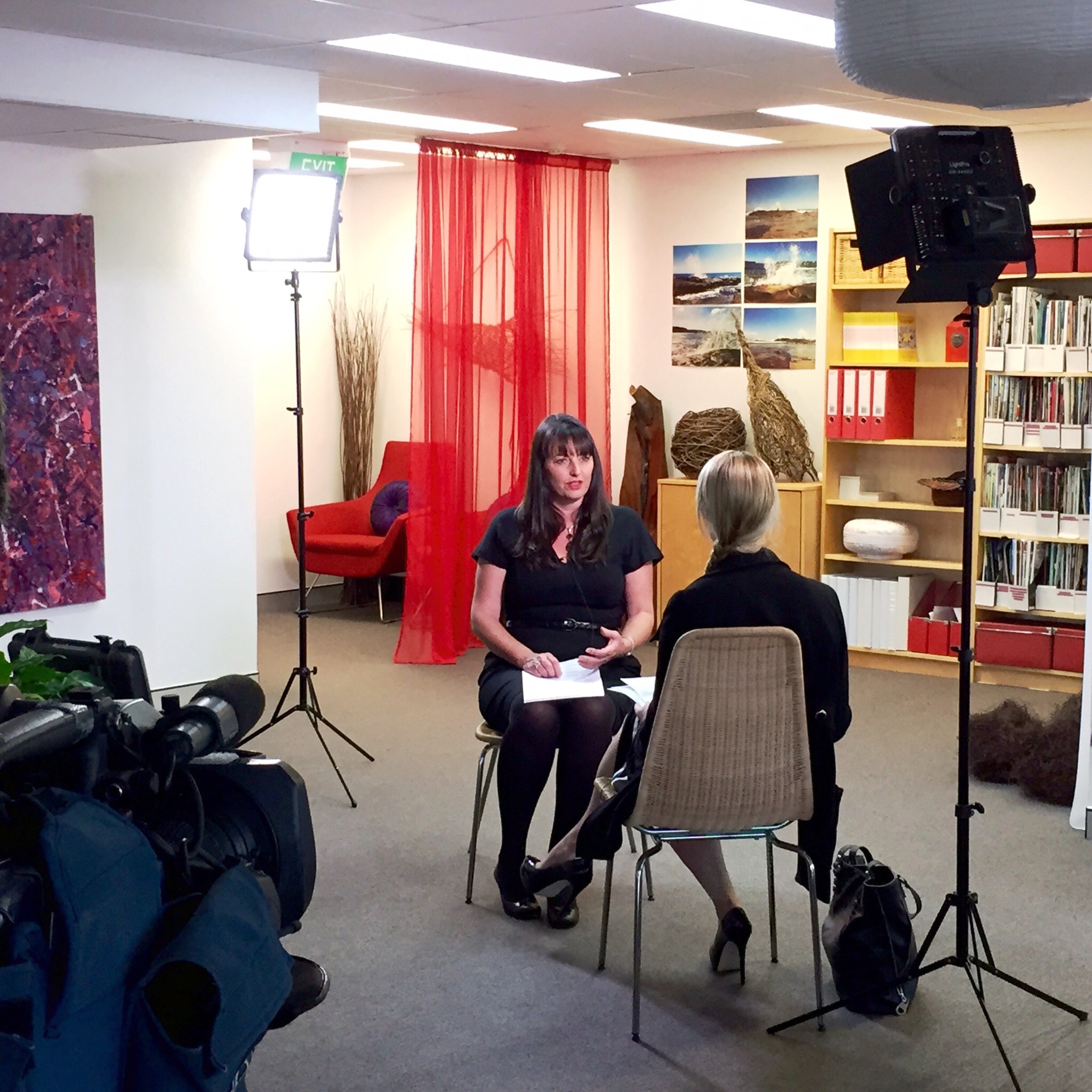 business great exposure in front of your target audience and also help you to visually connect with your audience. As your audience is able to see you, television can also help you build trust and let people feel like they know you as a spokesperson.
business great exposure in front of your target audience and also help you to visually connect with your audience. As your audience is able to see you, television can also help you build trust and let people feel like they know you as a spokesperson.
Unlike other media, having an interview on television means your body language, dress, background and movement can all contribute to how you capture your audience’s attention. To appear credible on television, you need to look and sound professional.
Here are some tips to help you deliver a good television interview.
Preparation is key
The best thing you can do for a television interview is to deliver a clear, concise message. For this to happen, you need to prepare and practice thoroughly before every interview.
Write out a game plan which covers key issues, possible questions, and answers for each possible question. Think about the messages you want to communicate throughout your interview. Once you have decided what these are, you will be better prepared to weave your key messages into your responses. Find out how to write your key messages here.
Practising your responses is extremely important in your preparation. Practise answering questions in front of the mirror or film yourself to identify areas for improvement. The better prepared you are, the better you will be able to get your key messages across.
Look the part
It is important to look relaxed and calm, particularly as the audience will be able to see your facial expressions. If you look and speak confidently, you will appear more credible, and if you do make a mistake, it will not be as noticeable.
Try to use slow, controlled gestures. If you are seated in a swivel chair, try not to move around. Only use hand gestures if they complement what you are saying.
Wear a simple and professional outfit. Avoid wearing stripes, checks, herringbone, small intricate designs or flashy jewellery as they can be distracting when viewed on a screen.
Be enthusiastic
It is important to speak more expressively and energetically than usual. Otherwise your recorded voice can sound monotonous. Your voice should lift and drop, and increase and decrease in volume.
It is important not to ramble. Take a moment to think about what you will say. Say it and then stop. If the journalist is quiet, don’t feel as though you need to keep talking. Keeping your answers concise will help people digest what you are saying.
If you are unsure about how to best answer a question, try repeating the question back to the journalist to give you some extra time to think about your questions. Pause instead of using filler words such as ‘um’ while thinking.
If you make a mistake, just correct yourself and move on. Don’t dwell on it.
Don’t look at the camera
Don’t stare directly at the camera or continuously shift your gaze between the journalist and the camera. This can make viewers feel uncomfortable and they may not pay attention to what you are discussing.
It is best to hold eye contact and focus on the journalist and pretend the camera is not in the room.
Interviews are an excellent way to deliver your key messages directly to your audience. Ensure you do adequate preparation for the interview, particularly if it is live television. Practising will help you feel more confident in your presentation and approach to the interview.
For more tips on media interviews try reading this blog.
Want more PR tips? Download this FREE ebook:
Sydney Public Relations Agency, CP Communications provides specialist media, traditional and online PR strategies that get amazing results. Contact us today. For more PR tips see www.PublicRelationsSydney.com.au
Get more readers by optimising your content
Creating content is only half the job, being able to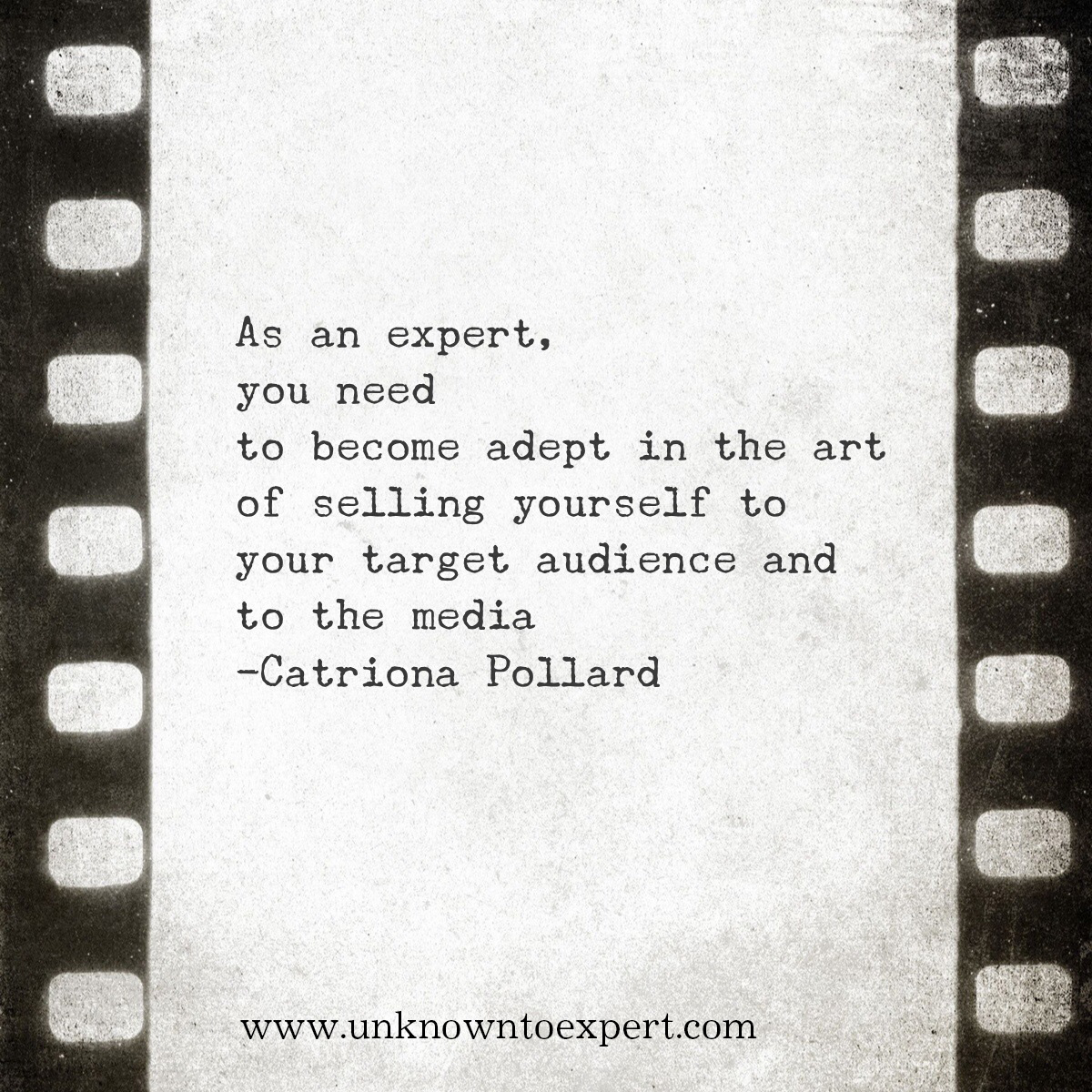 attract your audience and standout is the other half. Knowing and understanding what your audience wants to see will help you when optimising your content and, ultimately, being seen by your audience.
attract your audience and standout is the other half. Knowing and understanding what your audience wants to see will help you when optimising your content and, ultimately, being seen by your audience.
There are different ways to ensure that your optimised content is viewed and shared. To make sure that your blog posts, articles and social media content, the following strategies will help.
Have good content
Attracting readers starts with having good content that’s relevant to your audience and is well written.
If you’re running short of ideas for new original content that will be relevant to your audience, try asking your employees for ideas, or research what your audience is posting and engaging with online.
Always remember to give your readers something they will be interested in first and optimise the content as the second top priority.
Make content relevant with keywords
Try to post keyword-rich content and link to dedicated landing pages, for example on your social media profile, post blog articles from your website.
Good use of keywords and their placement will give you a better chance of moving up on social media search pages and search engines.
Also, use keywords on your social media’s ‘about’ and ‘information’ pages, and ‘description’ and ‘product and services’ sections.
Make shareable content
Content that’s widely shared by users is more likely to be considered top quality by Google, making it rate higher in search engine results.
You want to make it as easy as possible for users to be able to share content via their blogs, email, Facebook, Twitter and other platforms.
Analyse metrics
Every social media network has its own analytics such as Facebook insights. This will help you to learn more about who is visiting your sites, how they are engaging with your pages, how long they are staying and how they are using your company profiles. You can also look at Google Analytics to see the highest referrers of traffic to your website and the content that people are interacting with.
When it comes to creating content that gets read, you need to know and understand what would interest your audience. Creating attractive and shareable content, adding relevant and important keywords, and understanding and taking advantage of online analytical services will definitely help you stand out from the rest and, ultimately, have your content shared across different platforms.
Want more social media tips? Download this FREE ebook:
Sydney Public Relations Agency, CP Communications provides specialist media, traditional and online PR strategies that get amazing results. Contact us today. For more PR tips see www.PublicRelationsSydney.com.au
You can never have too many contacts
Business, just like real life, is about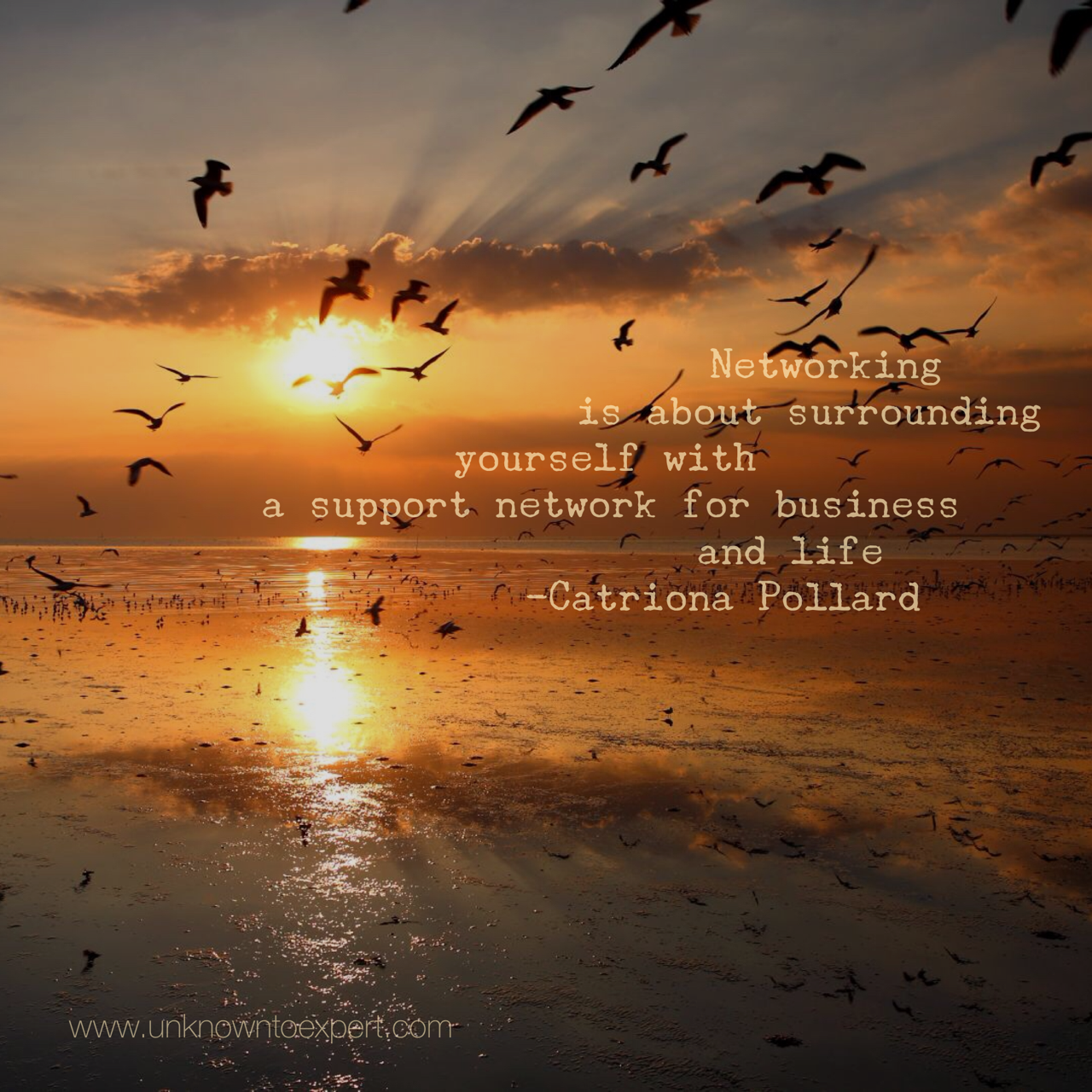 surrounding yourself with a support network that can build you up. Without this support, it can be difficult to expand and be successful.
surrounding yourself with a support network that can build you up. Without this support, it can be difficult to expand and be successful.
Everyone knows Andy Warhol’s saying, “One’s company, two’s a crowd, three’s a party”. The more people you have at your business ‘party’, the better. You can never have too many contacts.
The real question is, who do you network with, and how?
You need to look at who your audience is, and what platforms they are using.
Here are a a few people you should be networking with and where to find them.
Potential clients
Potential clients are probably one of the most important contacts you can make as they are the way you are going to grow your business. There are two things to remember when trying to network with new clients.
- Reach out to potential new clients by finding them on social media and engaging with them. Do more than just ‘follow’ or ‘like’ their page. Comment on their posts, share their content, and mention them in your social media posts. Be the proactive business owner and approach them.
- Be seen in the spotlight as an industry expert. When you are exposed in the media as a leader who specialises in what your potential client wants, it may inspire them to connect with you.
People in your industry
Industry contacts are vital for your business. Professional relationships have great benefits like potential client referrals, guidance, and motivation to achieve your business goals.
You should try attending networking events and make as many connections as you can. Also, try and to maintain the relationships you make at the networking events. Learn great networking tips here.
LinkedIn is the best social media platform to network with people in your industry, so if you don’t have an account, or haven’t updated it in a while, start getting more active. Learn more about using LinkedIn here.
Journalists
Probably the hardest contact to secure and maintain is with a journalist. But when you do get that contact, it can be the most valuable one you have.
Generally it can be difficult to get the contact details of journalists, however if you use Twitter, you can start that first step in the connection. Twitter has become the fastest and easiest way to communicate. Find the journalist you want to connect with on Twitter and start retweeting them, adding their Twitter handle to your posts, or even direct messaging them. Read more about using Twitter to grow your thought leadership and promote your business.
Networking with potential clients, people in your industry, and journalists will build your business up. Making new contacts and keeping a good relationship with them will enable a strong business support network. So start with looking at you your target audience and stakeholders. Then find them on social media, attend events where they are, and maintain all the connections you make to grow your contact list.
Want to learn more about how to network? Download the Networking Resource Guide
Sydney Public Relations Agency, CP Communications provides specialist media, traditional and online PR strategies that get amazing results. Contact us today. For more PR tips see www.PublicRelationsSydney.com.au
8 tips on using PR to promote an event
Putting on an event is a great way to  showcase your personal brand and connect with your audiences. However getting people to show up and maximise the PR opportunity is just as important as organising the event.
showcase your personal brand and connect with your audiences. However getting people to show up and maximise the PR opportunity is just as important as organising the event.
Here is an outline of a PR and marketing strategy you can apply to nearly any event or opening.
1. Get great visuals
Before you do anything, get great photos! Visuals are so important for promotion and marketing. Images help your audience understand and relate to your event.
You will use the images across all of your marketing and PR material, so having high resolution professional photos on hand to send straightaway to any journalist who asks for them will be a life saver. Don’t forget you can do a video as well.
2. Write a media release
Journalists need to receive information about your event in a certain way and a media release is the best way to do that. In the release add images, where and when the event is being held, and any other details.
3. Local news love local talent
Local papers love writing about the latest talent from their area. Research the details of the local newspapers, magazines and even radio stations for where you live and where the event is being held. Then send the media release and images to the editors or producers at those outlets.
There’s a good chance they’ll want to run a feature piece if the idea is interesting enough.
4. List your event
Newspapers and event sites are always looking for interesting events to put in their ‘What’s on’ sections. Do your research and provide information about your event: what, when, where, cost, and a short description.
Find the journalists that manage the ‘What’s On’ section and email them the information directly, or many online sites have forms you simply fill in. This takes some time but it’s definitely worth doing in order to boost the reach of your event.
5. Find media that relate to your event niche
Research the media outlets that write about the niche your event falls under. For example, if your event is on technology, then look up the journalists that specialise in technology and send them the release (and invite them!).
6. Writing articles
Think about telling some stories that relate to your event by writing articles for publications. For instance, if your event is an art exhibition, perhaps write a piece on the latest trends in your field of expertise.
7. Marketing
While many people no longer think to produce a printed flyer, it's worth considering. For example if you were hosting an art exhibition, you could print flyers as well as create a digital version. The digital version could be shared via email as well as on Facebook and Instagram. The printed version could be handed out and left at local cafes and art centres.
8. Social media
Love it or hate it, social media is perfect to promote an event. On Facebook, share your event information multiple times on your page and in niche pages and groups. Also, create an event on Facebook, invite your friends and ask them to share it.
Instagram is perfect for events as the site is based around visuals. Share your work, use hashtags effectively, and direct message influencers. Also, follow other Instagrammers that are in your niche, many will follow you back.
Events are such an important part of building your personal brand, and at times promoting your own event can feel self promotional. But you need to move beyond those feelings and understand that the more PR and marketing you do, the more people can see the beauty of your work.
Want more PR Tips? Download this free PR Strategy Checklist:
Sydney Public Relations Agency, CP Communications provides specialist media, traditional and online PR strategies that get amazing results. Contact us today. For more PR tips see www.PublicRelationsSydney.com.au
3 things you can learn from Taylor Swift on using social media to build a personal brand
[mp_row]
[mp_span col="12"]
Taylor Swift, the master of personal 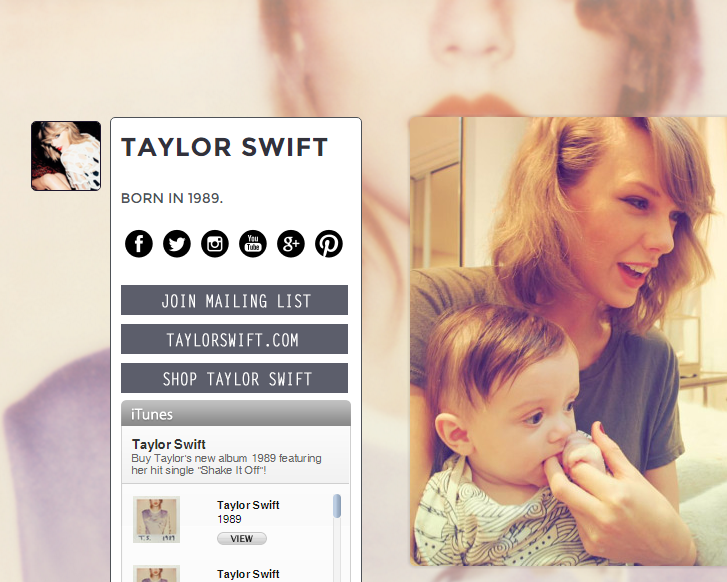 branding, particularly on social media. She
branding, particularly on social media. She
cleverly uses her social media profiles – Twitter, Facebook, Instagram, YouTube and Tumblr – to showcase her unique brand that portrays her as open, genuine, caring and passionate about causes close to her heart.
Nearly everything she does is based on these elements and the results are her fans adoring her, sharing her posts and buying her music.
You may not be a superstar, but you can take a page from Taylor’s book and use social media cleverly to build your personal brand. Here are some tips to get you started.
- Choose your platform wisely
With so many social media platforms to choose from it can be difficult to decide which one is the most effective. It’s a good idea to begin with one or two until you have mastered how to use them effectively. Each social media platform can be used differently and each will help you achieve different goals.
For instance, Tumblr is an online community where people can share and interact with each other over a huge range of topics. There are a lot of niche interests to be found on Tumblr, and this could be the ideal site for people with unique areas of expertise.
Likewise, Twitter is a great way to promote ideas, link to important issues in the media and attract a multitude of followers depending on your interests and use of hashtags.
Do some research in to how best utilise each social media site and how it can best help you build your brand.
- Define your expertise
It’s really important to define your area of expertise as this will help you showcase your knowledge in a particular area. Whether it’s positioning yourself as an expert or building a community around your personal brand, setting this goal will help determine your social media activities as well as help measure your overall success.
Taylor Swift’s brand defines not only her talents as an artist but also her personality. She is someone who wants to help upcoming artists as well as interact with her fans on a personal level. Her generosity and goodwill is a huge part of her personal brand. More importantly, this is defined across all her social media platforms.
- Have a strategy
If you use social media without a purpose or a strategy you will waste a lot of time. This usually occurs when you spend hours looking through your social media accounts and are unsure what to post of comment on.
You need a social media strategy to help you define your goals and objectives for using social media and to make the most of your time spent on each platform. Your strategy will help you define what to post, when to post it, who will be in charge of posting, how to reply to comments and how to measure your engagement.
For instance, there is no point having an account with Tumblr if you don’t blog or have a Twitter account if you only tweet occasionally.
So like Taylor Swift, make the most of social media, be yourself and have clear goals in mind about who you want to reach and why. Before you know it, your personal brand will be flourishing and you’ll be a superstar in your own right!
Want more social media tips? Download this FREE ebook:
Sydney Public Relations Agency, CP Communications provides specialist media, traditional and online PR strategies that get amazing results. Contact us today. For more PR tips see www.PublicRelationsSydney.com.au
[/mp_span]
[/mp_row]
5 ways to use Tumblr to promote your business
 Have you considered using Tumblr to promote your business? While not a popular as Facebook, it is the hidden gem of social networking sites.
Have you considered using Tumblr to promote your business? While not a popular as Facebook, it is the hidden gem of social networking sites.
Tumblr is a blogging and social networking site that can be used to post and share images, video, GIFs, audio, short articles or pieces of writing.
Launched in February 2007, the platform now has over 420 million users, 217 million blogs and 113.6 million Tumblr posts and published per day.
Though it is not the ideal platform for all businesses, it offers an opportunity to share creative content and connect with audiences through a different medium.
Here are five examples for how Tumblr can be used to promote your business.
- Tell your stories
Tumblr is a visual site and is a great platform to tell your stories. Consider converting your key messages into visuals or short blog posts. This is a great way to reiterate key statements about your business and promote audience interaction with your brand.
- Blog with visuals
Visual content is a great way to increase engagement and audience reach on Tumblr. Visuals including videos, images and GIFs are well received online and can be used to enhance your business’ presence in a visually appealing manner.
For example, The Hunger Games franchise used Tumblr to create a blog that showcases additional movie-related content. The themed blog called, “Capitol Couture” highlights fashion from the fictional film is appealing to both fans of the film and fashion audiences and is a great example of how to highlight a product or service offered by a business.
- Know your audience
If your target audience is under 35, Tumblr is a platform that can be used as part of your social media strategy as over 66 per cent of users are under 35. According to PR Daily, studies have shown that millennials are leaving Facebook for newer social media sites such as Tumblr, Instagram and Snapchat. Tumblr claims millennials (aged under 35) are spending an average of 28 minutes per visit on their site, more than the time spent on Facebook and Twitter.
Be aware of the type of content your business shares and how you talk to audiences to ensure it is appropriate for the audience demographic and platform.
- Follow, like and reblog
It is important to provide a continuous stream of content on any platform you use but it is also just as important to listen and look at what your followers are posting. Try searching for posts on topics related to your business and consider following the people who provide the most relevant or prominent posts on these topics.
As Tumblr is a content sharing community, it is a good idea to engage with your audience regularly. Take a few minutes each day to like or reply to posts about your business, post your own blog content or reblog other people’s posts or both. This will help to keep your business top of mind.
- Use tags
Tumblr users discover other people’s posts by the tags associated with the content. By applying tags to a post such as “business”, “technology”, “mobile”, if anyone searches for these terms, your content will become discoverable even to those that aren’t following your Tumblr posts. Make a note of all the tags on posts you follow or are related to your business. If appropriate you can apply these tags to your posts to increase visibility and audience reach.
Tumblr is proving to be a quiet achiever with millennial audiences. Businesses are able to capture audience attention using written and visual content that is easily searchable and transferrable onto other social media sites. If applicable to your business, Tumblr can be used to communicate your key messages and tell your stories in a visually appealing format.
Have you considered using Tumblr for your business? Let us know what you think of the site in the comments below.
Want more social media tips? Download this FREE ebook:
Sydney Public Relations Agency, CP Communications provides specialist media, traditional and online PR strategies that get amazing results. Contact us today. For more PR tips see www.PublicRelationsSydney.com.au
4 tips to make blogging easier
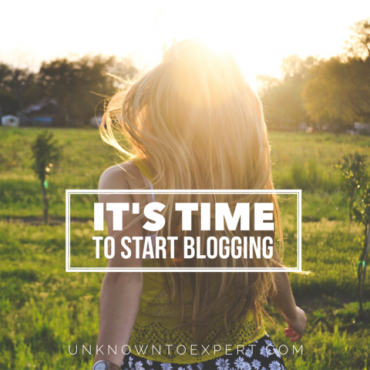
Blogs are a great way to communicate with your audiences and demonstrate your expertise online. Blogging can increase your credibility and reputation and also develop expand your network. Blogging can be made easier if you have a good plan.
A blog plan enables you to use your time effectively and ensures that you create a successful blog. A blog plan can help you to be proactive and plan ahead of time. You can craft your ideas and topics for blog post in a calendar format.
When writing your blog plan, consider the following:
1. Conduct research
It is a good idea to do some research and take a look at blogs in your area of expertise, blogs you’ve read before and blogs you currently read. Look up your competitors’ blogs and people you admire in your industry to get an idea of what they are publishing and how their readers interact with them.
2. Set a posting schedule
Just like a magazine or newspaper, your blog should be planned out ahead of time and have a publishing deadline for example, every Tuesday at 11am.
If you set a posting schedule and a deadline you no longer have an excuse to not regularly publish content on your blog. It is also a good idea to schedule a time for writing your blog to help create a routine and ensure you never miss an opportunity to connect with your audience.
You may also think about writing your blog posts in batches and scheduling them to publish on your website. Some website platforms, like WordPress, allow you to schedule your posts ahead of time. This is a great time saving tool and it helps to take the chore out of writing each week.
3. Creating content
When thinking about what to write, consider creating blog posts around your area of expertise and trends in your industry.
Planning ahead of time also means you can identify and capitalise on key business events, such as conferences and launches, and post about the events in the lead up or to source available resources such as eBooks or infographics to share.
To help get you started, here are a few blog post ideas you can include in your blog plan calendar:
- Highlight special products and services.
- Meet someone interesting at an event? Interview them via email and blog about it.
- Read something you don’t agree with? Write a blog post about it.
- Note down everything you do in your role. Tell your readers about how you do each task.
Here are more tips for writing great online content.
4. Create a blog calendar
Plan ahead and map out a blog content schedule for 6 – 12 months in a blog calendar. A blog calendar should include:
- Blog post titles and ideas
- Themes
- Topics
- Dates
This can be done easily in an Excel spreadsheet or Google calendar and is a great way to avoid repeating the same topic. Planning your activities and updates will enable you to share fresh content and ideas with your audience.
It also means you can plan and promote your blog posts ahead of time. For example, promoting and publishing a five part series on leadership over a five week period.
Blogging allows you to control the message, connecting with your audience on a personal level. It provides a platform for you to inform and position yourself as a thought leader and expert in your industry, but in order to successfully position yourself as an expert using a blog, you need to plan ahead.
Want more tips? Download this free ebook
Sydney Public Relations Agency, CP Communications provides specialist media, traditional and online PR strategies that get amazing results. Contact us today. For more PR tips see www.PublicRelationsSydney.com.au
How to write a great case study

Case studies provide ideal opportunities to leverage business successes and can be used to reinforce your core messages through story telling. They provide audiences, including journalists, with evidence of how you successfully help your clients and showcases the strengths of your business.
In this article we explain how you can write a great case study.
What is a case study?
Case studies are short explanation of a project your business has worked on for a client or customer. They describe a problem, show how you achieved a solution and detail the results you achieved.
Case studies follow the same format:
- Identify the challenge a particular customer faced
- Describe the solution you provided
- Illustrate the measurable results gained from using the service
Many publications require case studies to be written in a specific way, for example:
- Background – what were the contexts of the case study?
- Objective – what did the company hope to achieve?
- Strategy – how did the company plan to achieve the objective?
- Execution – how did the company actually implement the strategy?
- Results – what were the results of the execution? Did they align with the objectives? What did the company learn from the whole experience?
When writing your case study you may want to interview your client to get their perspective on how your business has helped them. You can also include quotes from your client as well as the key person from your business that worked on the project.
Your case study should demonstrate how your company’s product or service was a key factor in solving your client’s problem. It doesn’t have to be solely about your product or service, but your influence must be vital to the success.
Don’t forget to share your case studies. Case studies can be pitched to relevant media outlets, used as the basis for a presentation, put on your website, shared on social media and also used when pitching for new business.
Take a look at some of our case studies.
Want some more PR tips? Download our free ebook today!
Sydney Public Relations Agency, CP Communications provides specialist media, traditional and online PR strategies that get amazing results. Contact us today. For more PR tips see www.PublicRelationsSydney.com.au
